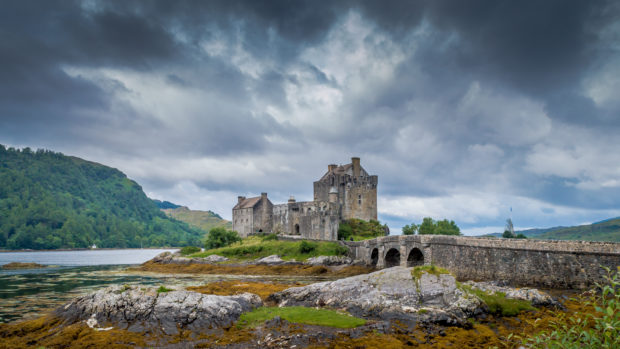
Economists fear the impact of Covid-19 could be catastrophic for the Highlands and Islands and risks provoking an exodus of young people searching for work.
The communities in the region are among the most at economic risk as the pandemic shuts down tourism and, on Friday, 75 leaders in the industry wrote to the First Minister to warn the area could require government support for almost a year.
Tourism spend in the Highlands alone is worth more than £1 billion a year, with the sector employing more than 15,700 people in what can be economically fragile communities in remote parts of Scotland.
Highland tourism ambassador Willie Cameron said he feared youngsters may be forced to leave to look for work if the lockdown is extended for months.
“What we are looking at is the possibility of an economic Highland clearance,” he said. “The challenges of the lockdown are becoming more extreme every day.
“It can cost up to £10,000 just to make a business like a small café safe for people to use and, even then, only half the number of customers would be allowed back at any given time. The same applies to other businesses right across the tourism sector, so even if the Highlands reopened in the summer many businesses could find that it would not be viable. This will be bad news for our young people. If there is no tourism there are no jobs and I would not be surprised to see many moving to the cities because they simply have no other choice.
“The Loch Ness area alone usually takes in about £45 million a year from tourism but at the moment business has simply fallen off a cliff.”
Mr Cameron stressed that it is not just people who directly work in tourism who are being affected.
“I am involved in a bakery in Drumnadrochit that employs 40 people and it relies on tourism – but what will happen to businesses like that across the Highlands if there are no visitors to cater for? In a way, tourism is everybody’s business in this country.”
The Fraser of Allander Institute economic think tank has said the sector in Scotland would suffer more impact than most because it is more prevalent here than the rest of the UK.
The letter to Nicola Sturgeon was signed by 75 tourism and hospitality business leaders from across the north Highlands, the area covered by the popular North Coast 500 route, Argyll, and the Isle of Skye.
The group told the First Minister their businesses need to reopen “as soon as it is safe to do so”.
They warned: “The difference between reopening in July or September could likely be the determining factor in the survival of our industry, its suppliers and producers.”
Professor Jim Hunter, historian and former chairman of Highlands and Islands Enterprise, said economically the region was facing a “perfect storm”.
“The result of an extended shutdown in the region would be particularly challenging for young people as many would have no job, no money and nowhere to stay. The consequences could be ruthless, like the Highland Clearances were.”
Professor Donna Heddle, head of tourism at the University of the Highlands and Islands, said a way has to be found to turn tourism and hospitality into a lifelong career.
“At the moment there is virtually no work at all for young people in tourism in the Highlands and that is a big concern. It will be a huge challenge going forward,” she said.
A Scottish Government spokesperson said: “The Scottish Tourism Emergency Response Group, chaired by VisitScotland, has been in place since the beginning of the crisis.
“The group has developed a national action plan and that work will help inform how we move forward as we carefully emerge from this crisis.”

Enjoy the convenience of having The Sunday Post delivered as a digital ePaper straight to your smartphone, tablet or computer.
Subscribe for only £5.49 a month and enjoy all the benefits of the printed paper as a digital replica.
Subscribe